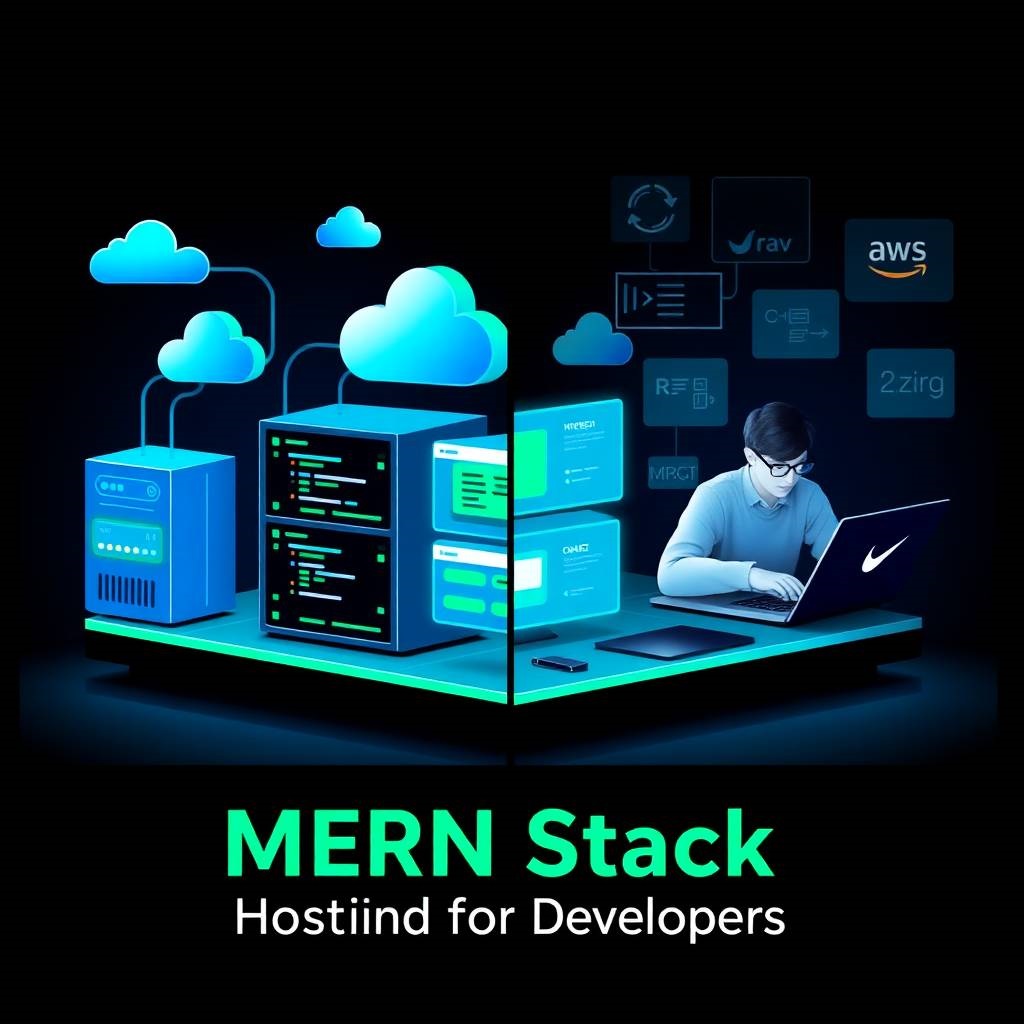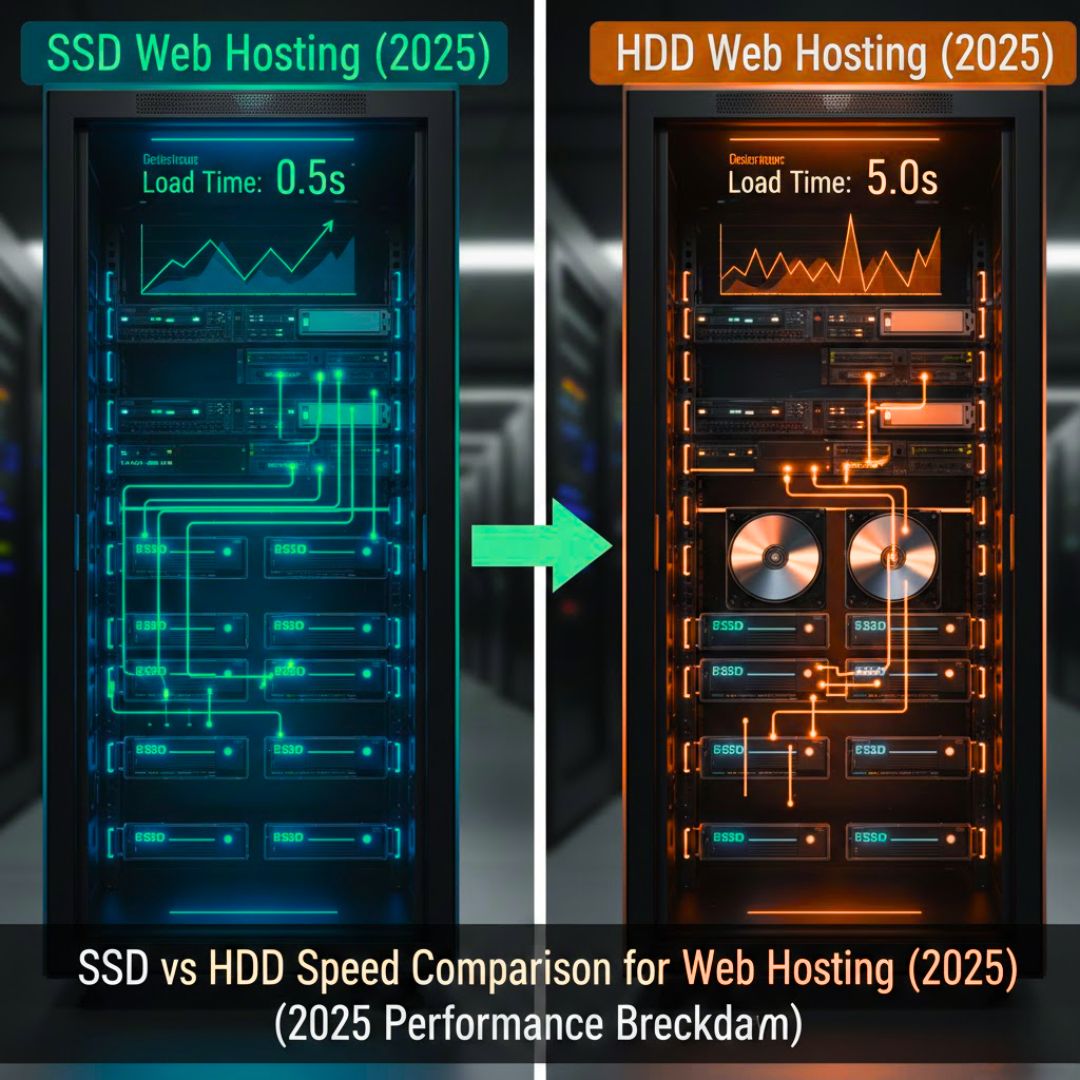
MERN Stack Hosting Explained for Developers: Best Platforms, Tips, and Step by Step Deployment Guide
- By Admin
- 22 May, 2025
MERN Stack Hosting Explained for Developers: Deploying your first MERN stack application can feel overwhelming. You've built an amazing full-stack app locally, but now you're staring at dozens of hosting options, wondering which one won't break your budget or require a PhD in DevOps to configure. Sound familiar?
You're not alone. Many developers struggle with the transition from local development to production deployment, especially when dealing with the complexity of a full-stack application that includes both frontend and backend components, plus a database.
In this comprehensive guide, we'll break down everything you need to know about MERN Stack Hosting Explained for Developers —from understanding your deployment options to step-by-step instructions for the most popular platforms. By the end, you'll have the confidence to deploy your MERN applications like a pro.
What is the MERN Stack and Why Does MERN Stack Hosting Explained for Developers Matter?
The MERN stack is built using four robust and widely-used technologies:
MongoDB serves as your NoSQL database for storing application data. Express.js acts as your backend web framework for Node.js. React powers the frontend as a JavaScript library for building dynamic user interfaces, while Node.js serves as the backend runtime environment for executing JavaScript on the server side.
This combination creates a full JavaScript ecosystem that allows developers to build modern, scalable web applications using a single programming language throughout the entire stack.
When it comes to hosting, the MERN stack presents unique challenges. Unlike simple static websites, you're dealing with a React frontend that needs to be built and served, a Node.js/Express backend requiring a server environment, database connectivity (usually MongoDB), Managing environment variables and configurations effectively is essential, along with addressing potential CORS issues that may arise between the frontend and backend.
The hosting platform you choose will affect how fast your app runs, how well it handles growing user numbers, how secure it stays, and how smoothly you can make updates and changes.
Top MERN Stack Hosting Providers: Detailed Comparison
Heroku - Best for Beginners
Heroku stands out as extremely beginner-friendly with excellent documentation. It offers a Git-based deployment workflow, built-in MongoDB Atlas integration, and a free tier available (with limitations). It also handles secure connections and allows you to use your own website address automatically.
However, it can be expensive as you scale. Free tier apps sleep after 30 minutes of inactivity, and you have limited customization options.
This platform works best for developers new to deployment, prototypes, and small to medium applications.
Vercel - Excellent for Frontend-Heavy Apps
Vercel provides exceptional performance for React applications with built-in CI/CD through Git integration.It offers a generous free tier, automatic preview deployments for pull requests, and fast global delivery through a CDN.
The downside is that it's primarily designed for static/JAMstack apps. Serverless functions have execution time limits, making it less suitable for traditional backend APIs.
Choose Vercel for projects where the React frontend is the primary focus, or when using serverless architecture.
Netlify - Great for JAMstack Approach
Netlify excels at static site hosting with build automation. It includes built-in form handling and serverless functions, easy custom domain setup, and a generous free tier.
The limitations include serverless functions being better suited for simple APIs, not being ideal for complex backend logic, and database connections can be challenging.
This platform works well for applications that can leverage serverless architecture or static site generation.
DigitalOcean App Platform - Best Balance of Control and Simplicity
DigitalOcean App Platform gives you more control than PaaS solutions with competitive pricing. It has good documentation and community support, and supports both monorepo and separate deployments.
The trade-offs include a steeper learning curve than Heroku, requiring more configuration, and no free tier for apps (only static sites).
Choose this for developers who want more control without managing servers directly.
Railway - Modern Alternative to Heroku
Railway provides an easy deployment experience with integrated support for provisioning databases. You get a generous free tier and a modern interface with great developer experience.
Since it's a relatively new platform, you'll find a smaller community and fewer tutorials. It also has limited advanced features compared to established platforms.
This works well for developers looking for a modern, simple deployment platform.
AWS (Elastic Beanstalk + S3) – A Scalable, Enterprise-Level Hosting Solution
AWS offers powerful scalability and dependable infrastructure that can grow with your application. You gain detailed control over your hosting environment along with professional-grade security features that meet business standards.
The challenges include complex setup and configuration, a steep learning curve, potential high costs without proper optimization, and requiring AWS knowledge.
Choose AWS for large applications, enterprise projects, or when you need specific AWS services.
Preparing Your MERN App for Production
Before deploying to any platform, you need to prepare your application for production. Here's a comprehensive approach:
Frontend (React) Preparation
Start by creating your production build. Go to your React app folder and execute the build process. This creates an optimized version of your app in the build folder.
Next, optimize your bundle size by removing unused dependencies, implementing code splitting, and optimizing images and assets. Large bundles slow down your app's initial load time.
For environment variables, use them for API endpoints instead of hardcoding URLs. Set up different environment files for development and production, ensuring your React app can communicate with the correct backend URL.
Backend (Node.js/Express) Preparation
Configure your server for production by setting up static file serving for your React build. When in production mode, your Express server should serve the React build files and handle client-side routing by sending the main HTML file for all non-API routes.
Set up environment variables for sensitive data like database connection strings, JWT secrets, and API keys. Always keep these sensitive values separate from your codebase to maintain security and flexibility across different environments.
Configure your database connection to use environment variables. This allows you to use different databases for development and production without changing your code.
Step-by-Step Deployment Guide
Deploying to Heroku
First, install the Heroku CLI then log into your account. The CLI allows you to manage your Heroku apps from the command line.
Prepare your project structure with a root directory containing both your client (React) and server (Express) folders. Create a root package.json file that includes scripts for starting your server and building your React app during deployment.
Create a Procfile in your root directory that tells Heroku how to start your application. This file should specify that Heroku should run your server file.
Initialize a Git repository in your root directory, create a new Heroku app, add your files, commit them, and push to Heroku. The deployment process will automatically install dependencies and build your React app.
Configure your environment variables through the Heroku CLI or dashboard. Set your MongoDB connection string, JWT secret, and any other sensitive configuration.
Frontend Deployment & Environment Configuration
Deploying to Vercel:
Install the Vercel CLI, navigate to your frontend (client) directory, and run the deployment command. Vercel will guide you through connecting your project and setting up your deployment.
Environment Setup:
Update your React app's environment variables to point the API base URL to your backend hosted on Railway. Use Railway's dashboard to securely manage .
Best Practices & Pro Tips
Security Considerations
- Keep Secrets Safe: Never hard-code sensitive information (like API keys, database URIs, or JWT secrets). Use environment variables instead.
- CORS Configuration: Secure your API by allowing requests only from trusted frontend domains (e.g., your Vercel deployment URL and localhost during development).
- Safeguard your API from misuse by restricting how many requests a single client can make within a specific time period. This helps prevent server overload and ensures consistent performance for all users.
Performance Optimization
- Database Indexing: Create indexes in MongoDB for fields that are frequently queried to improve performance.
- Caching: Use Redis or in-memory caching to store frequently accessed data, reducing database hits and speeding up responses.
- Asset Optimization: Compress images, use a CDN for static files, and implement lazy loading to improve frontend load times.
Monitoring & Debugging
- Structured Logging: Use logging libraries that support different log levels (info, error, debug) for better observability and easier debugging.
- Health Checks: Implement health check endpoints so that load balancers or monitoring tools can ensure your service is up and responsive.
Common Deployment Issues & Fixes
"Cannot GET /" Error
Problem: After deployment, React Router routes may not work because the server doesn’t recognize client-side routes.
Solution: Configure your server to serve the React app’s index.html for all unknown routes (except API routes), enabling React Router to handle routing on the frontend.
CORS Errors
Problem: Your frontend can’t make requests to your backend due to CORS restrictions.
Solution: Set up your Express server to allow requests from both your local development domain (e.g., http://localhost:3000) and your production domain (e.g., https://your-app.vercel.app).
Environment Variables Not Working
If your app can't access environment variables in production, ensure variables are set in your hosting platform's dashboard. Use correct prefixes for React variables, and restart your application after setting variables.
Database Connection Failures
When you can't connect to MongoDB in production, whitelist your hosting provider's IP addresses in MongoDB Atlas, use the correct connection string format, and ensure your database user has proper permissions.
Frequently Asked Questions about MERN Stack Hosting Explained for Developers:
Should I deploy the frontend and backend separately or together? It depends on your needs. Separate deployments offer more flexibility and can be more cost-effective, but require more configuration. Combined deployments are simpler but less flexible.
How do I handle file uploads in a deployed MERN app? Use cloud storage services like AWS S3, Cloudinary, or Google Cloud Storage instead of storing files on your server.
Can I use a different database provider than MongoDB? Yes, but you'll need to modify your code accordingly. Popular alternatives include PostgreSQL (with hosting on services like Supabase) or Firebase Firestore.
How do I implement CI/CD for my MERN app? Most modern hosting platforms offer built-in CI/CD. Connect your Git repository, and deployments will trigger automatically on pushes to your main branch.
Conclusion and Next Steps
Deploying a MERN stack application doesn't have to be intimidating. Start with a beginner-friendly platform like Heroku or Railway to get comfortable with the deployment process, then gradually explore more advanced options as your needs grow.
Here's your action plan:
Start simple by choosing Heroku or Railway for your first deployment. Focus on securing your app by implementing proper environment variable management and security practices. Set up basic monitoring and logging to track your application's performance. Scale gradually by moving to more advanced platforms as your application grows. Keep learning continuously by staying updated with new deployment tools and best practices.
Remember, the best hosting solution is the one that fits your current needs, budget, and technical expertise. Don't feel pressured to use the most advanced setup from day one—you can always migrate and upgrade as your project evolves.
What's your next step? Pick a hosting provider, follow the deployment guide for your chosen platform, and get your MERN application live on the web. The developer community is here to help if you run into issues, so don't hesitate to ask questions and share your experiences.
Happy deploying!
Learn more :



